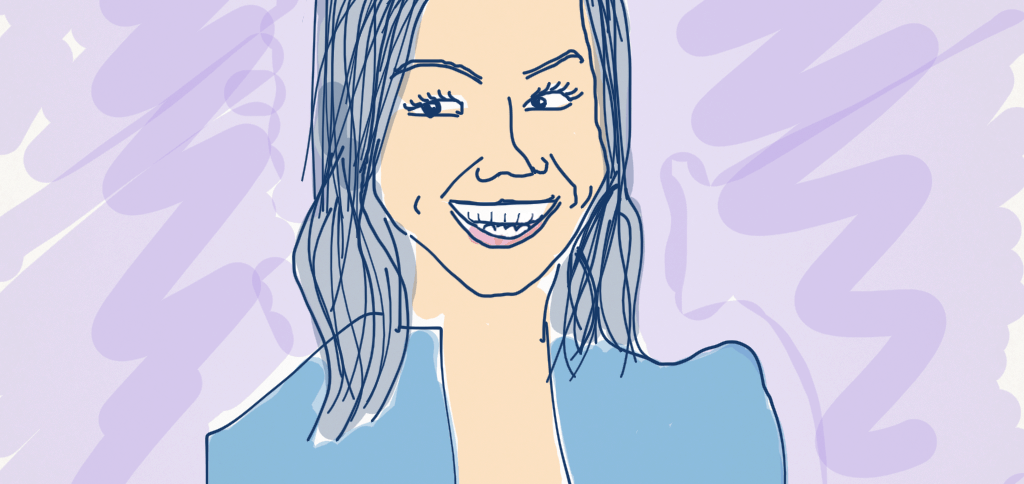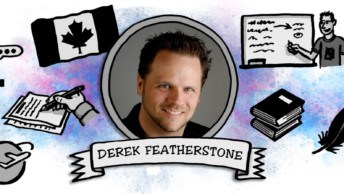This is the second in a series of interviews with speakers from the UX Australia conference, which is on in Brisbane this week. Ruth Ellison took a few minutes to chat about web accessibility, how she came to a career in UX, and the state of UX design in Australia.
Give us a rundown of how you came to work as a user experience practitioner, what it is you do, and what you love about it.
I started my UX life as a business analyst in government, designing mainframe (green) screens! My team moved desks… and I ended up next to the User Centred Design team. I couldn’t help but overhear what they were talking about – and it was fascinating! So one day (being the curious type), I poked my head over the partition and asked, “how do I join your team?”
10 years on and I’m now a principal user experience designer at Stamford Interactive. I spend a lot of time learning about how people interact with products and services and looking for ways to improve and provide an inclusive user experience.
I absolutely love the cross over between design, psychology and cognitive science! I also love the breadth of knowledge that you pick up when you get immersed into a subject (i.e. learning something new every day).
Every now and then we see passionate blog posts pop up, bemoaning the use of “UX” as a discipline and arguing that everyone involved in making a product should be thinking about the user experience, not just the “UX designer”. What are your thoughts on this?
Everyone has something useful to contribute to the user experience. Customers are an amazing source of insights but we mustn’t forget that staff, no matter what level they sit within an organisation or what role they have, all contribute to the experience either directly or indirectly. One of my favourite parts of research is sitting with staff at the coal face and observing how they work. When you chat to them afterwards, they usually have great ideas on improving the service/product and the interaction that the users have with them.
While it’s important that everyone should be thinking about the user’s experience in varying depths, you still need a role that is responsible for the overall design and experience strategy of those using your product or service. This involves careful design across channels (mobile, web, print, face-to-face, call centres, branding, packaging… just to name a few) by gathering insights and making the connections between these insights and a fantastic user experience. This type of insight-driven design doesn’t just happen – you need people with the right skills to help facilitate this type of design thinking and process.
What’s your take on the state of user experience design in Australia, compared to the rest of the world?
I’m happy to see that awareness of UX has risen significantly over the past five years or so in most parts of Australia. We’re gone from, “what’s UX?” to dedicated teams of UX professionals in large organisations. But this awareness is still quite varied, depending upon which part of Australia that you’re in. I live in Canberra – the awareness of UX is quite high (although there is the odd occasion where people get UX confused with graphic design and/or market research).
In some ways, we’re still playing catch up with the rest of the world, particularly when it comes to UX and higher education. I was fortunate to get the opportunity early in my career to do further study in Human Computer Interaction (HCI), but there are not many “UX” degrees (versus UX related units) in Australia compared to the rest of the world. I would love to see more UX undergraduate and post graduate courses across different tertiary institutions, in addition to UX units in other disciplines (programming, business analysis, graphic design etc).
Another area that I would love to see take great leaps forward is the application of inclusive design principles to our design process – how do we design our services and products to be as accessible to as many people as possible? As UX designers, we should be aware of the broad range of experiences and abilities of our users, no matter where they sit on the ‘ability’ spectrum.
What tips would you give to a print designer who was interested in transitioning to a career as a UX designer?
- One of the tricky transitions from print to other types of digital products/services is coming to terms that the digital world isn’t fixed. People are using the stuff you design in a multitude of ways – from small screens of mobile phones, to tablet devices, to super large monitors and kiosks. They could potentially be interacting with your product/services using gestures, touch, keyboard, assistive technologies and more,
- The user experience is more than the user interface. Hone the ability to take a step back and take a holistic view of the product/service. Think cross channels,
- Be curious. Don’t be afraid to keep asking questions until you can clearly define the problem(s)…but don’t stop there. It’s our job to ask the hard questions, gather insights and make connections so we can craft a great user experience,
- Get involved in your local UX groups, such as UX Bookclub, and attend UX conferences. You’ll be amazed at what you can learn at these gatherings, particularly from people who are really passionate about UX, and
- Last but not least, be passionate! Be passionate about learning, about people, about designing and about making a difference.
Let us know what attendees to UX Australia can expect from your presentations.
I’m doing two presentations at UX Australia. The first is with my lovely workmate, Kim Chatterjee. We’ll be talking about 21.5 ways to adjust attitudes to accessibility. Bring your sense of humour and be prepared to get your geek on, as we delve into culture change and accessibility through a number of tongue-in-cheek strategies.
My second presentation is Mindful designs: Practical tips for designing for cognitive & learning difficulties. I’m really passionate about inclusive design, particularly in the area of cognitive and learning difficulties. It’s one of the most overlooked areas of design and it can be quite tricky. We’ll be having a look at some of the user experience challenges with using the web that people with these difficulties may have and we’ll be covering a range of design principles to address some of these difficulties.
UX Australia is a two-day conference about user experience design. It’s on at the Sofitel Brisbane Central from 30 – 31 August, 2012, and features a ton of local and international presenters. There are also two days of workshops on August 28 and 29.





